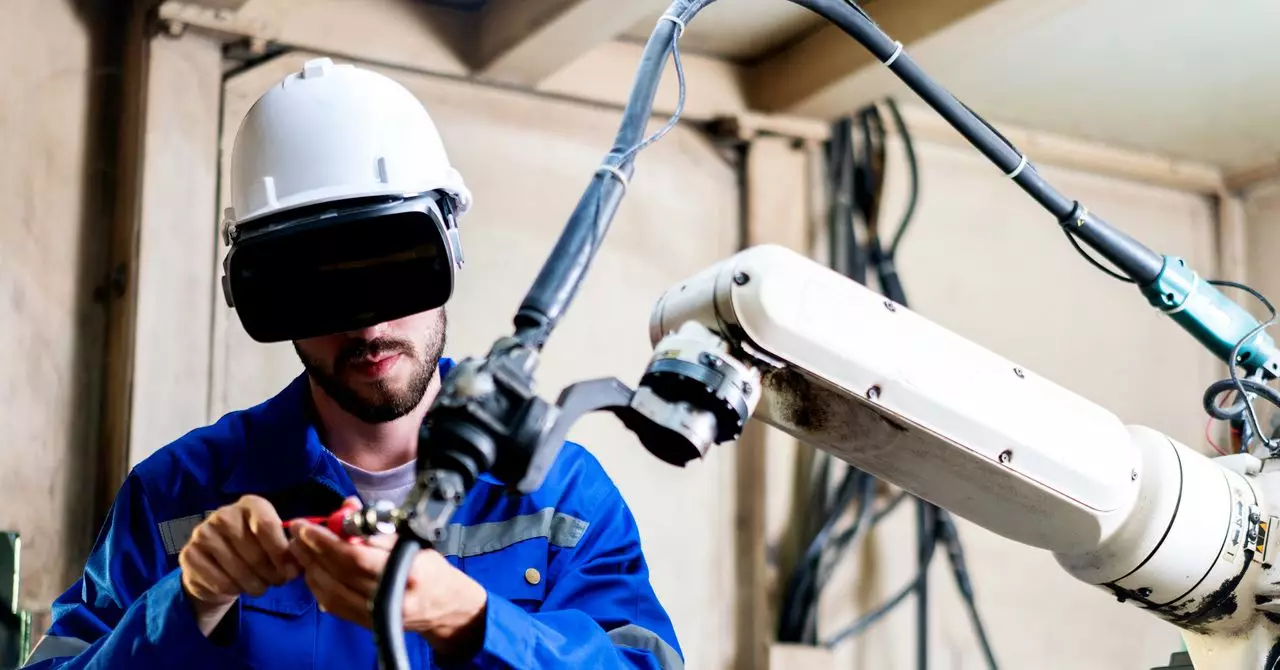In today’s rapidly evolving technological landscape, the manufacturing sector stands at a transformative juncture, largely thanks to the advent of the industrial metaverse. The traditional methods of testing production lines, which once necessitated dragging teams across the globe just to physically check if a car chassis could traverse a factory setup, are swiftly becoming obsolete. Instead, engineers now wield the power of sophisticated simulations, which allow them to run 3D models through a digital replica of a factory. This innovation not only streamlines processes but also identifies potential snags well before the heavy machinery is put to work, saving companies significant amounts of time and resources.
At its core, the concept of the industrial metaverse transcends mere visuals; it integrates a plethora of technologies including augmented reality (AR), simulations, and advanced sensors, forming a cohesive digital ecosystem that mirrors the physical. As Varvn Aryacetas from Deloitte aptly refers to it, spatial computing bridges the gap between our realities and digital potential, enhancing everything from virtual training to real-time product design. The immersive quality of this convergence is where the true value lies, equipping manufacturers with tools to innovate and implement changes with more agility than ever before.
The Economic Impact of the Industrial Metaverse
Despite tepid consumer interactions with the metaverse—which have struggled to find traction—the industrial metaverse is on the brink of a significant economic boom. According to a report from the World Economic Forum, projections estimate this sector to reach a staggering $100 billion by 2030. This monetary value is hardly surprising given the amount of efficiency and innovation ripe for the taking. Manufacturers can adopt a risk-averse approach by simulating outcomes before any physical actions are taken, leading to more informed decision-making.
Nvidia exemplifies this shift with its groundbreaking Omniverse platform, designed to enable the creation of digital twins for a variety of applications. Rev Lebaredian, a key figure at Nvidia, highlights the vast utility of these simulations, asserting that the ability to recreate reality digitally is essential for developing autonomous systems. The Omniverse not only enhances productivity but also facilitates collaboration across various sectors, making once-complex tasks not just manageable but straightforward.
Case Studies: Leading the Way in Digital Transformation
Several industry leaders are already harnessing the power of the industrial metaverse to reshape their operational frameworks. For instance, Lowe’s, the prominent home improvement chain, utilizes digital twin simulations to experiment with store layouts before executing any physical renovations. This preemptive approach mitigates potential errors significantly, proving the value of virtual trials in real-world applications.
Architectural firms like Zaha Hadid Architects also exploit these technologies to create intricate models, allowing for seamless collaboration among remote teams. Similarly, e-commerce giant Amazon leverages virtual simulations to train robots in their warehouses, optimizing efficiency before introducing them to the actual operational environment. Such case studies not only demonstrate the versatility of the industrial metaverse across various industries but also reveal its capacity to drive innovation by reducing the barriers typically involved in trial-and-error processes.
The Future Is Digital: BMW’s Holistic Approach
One of the most illustrative examples of the industrial metaverse in action comes from automotive giant BMW. The company has meticulously crafted virtual models of all its production sites, including its latest factory in Debrecen, Hungary. Prior to physical construction, the entire manufacturing process was simulated digitally. BMW populated its virtual factories with 3D representations of cars, machinery, and even personnel, using an open-source file format pioneered by Pixar called Universal Scene Description (OpenUSD).
This commitment to digital modeling illustrates BMW’s foresight in recognizing the necessity of embracing technology for efficiency. The complexity of their virtual factories is akin to real-world environments, showcasing how significant the scale of such models can be. By utilizing gaming technology to enhance their simulations, BMW has laid the groundwork for an innovative approach to manufacturing that is more adaptable and less prone to costly errors.
In essence, the industrial metaverse isn’t just a trend; it’s a vital evolution for industries to thrive in an increasingly competitive and technology-driven world. As more companies like BMW, Lowe’s, and Amazon incorporate these digital strategies, they pave the way for a future where manufacturing is not just a process but a dynamic and continuously evolving landscape.

